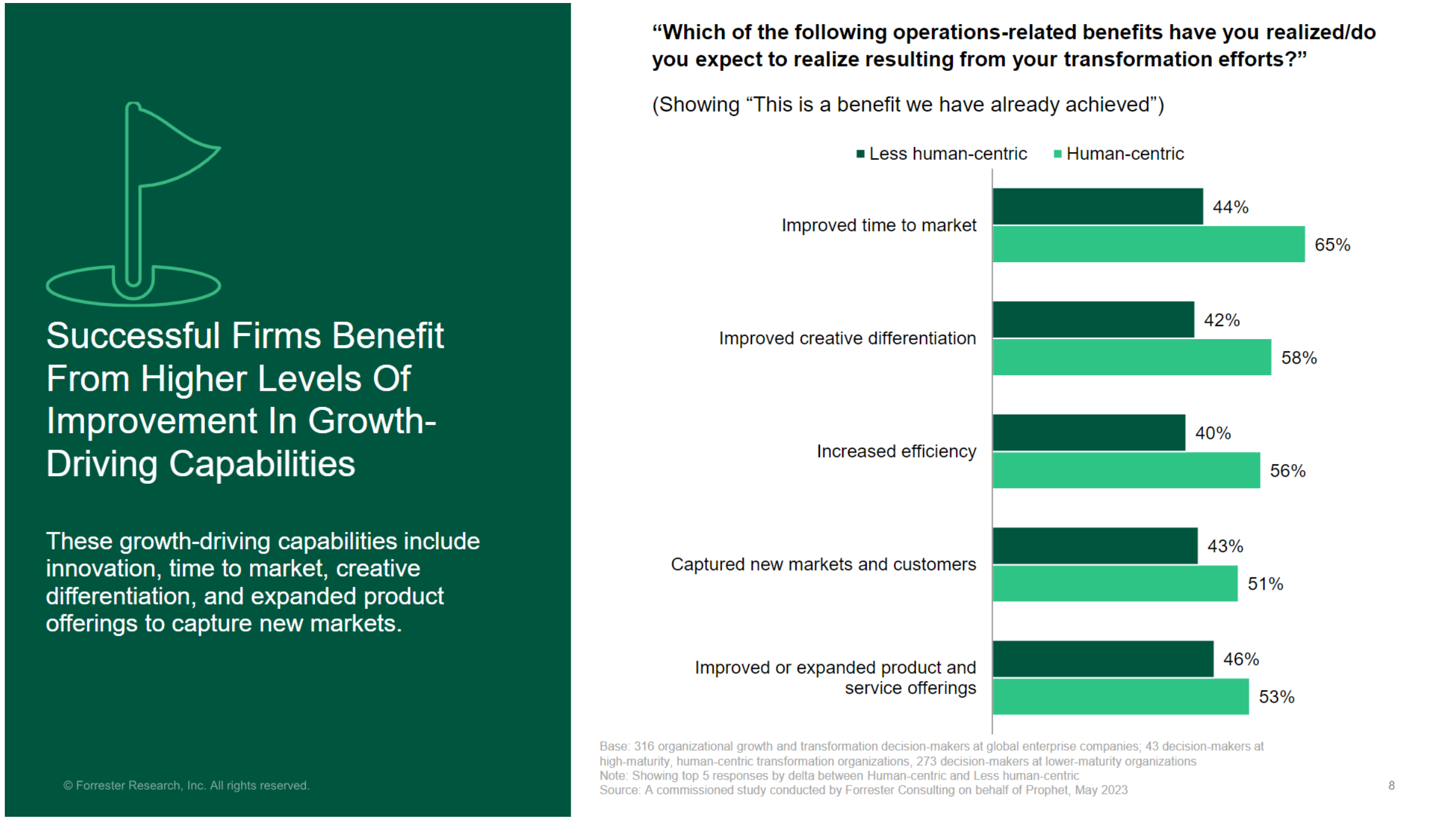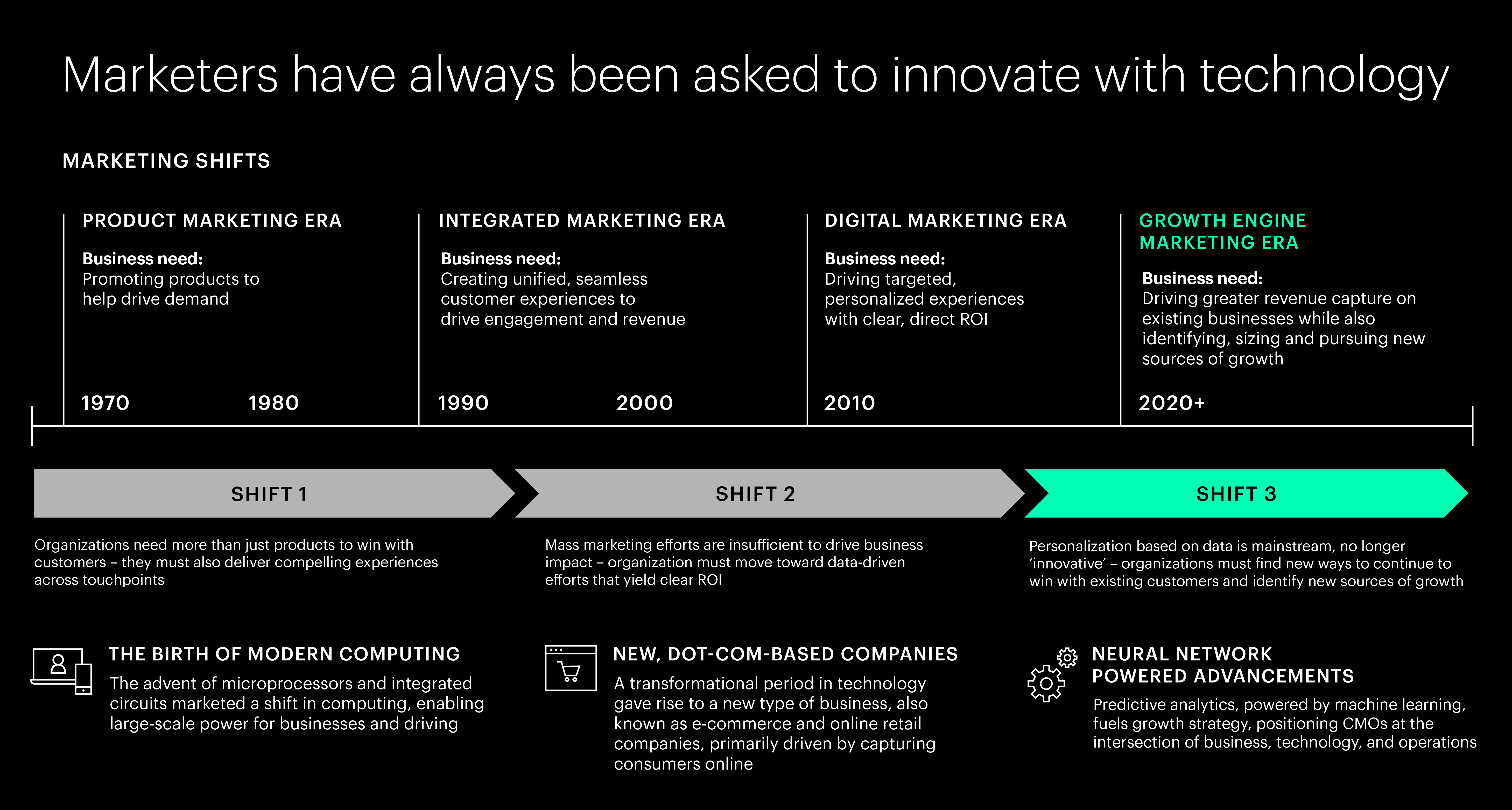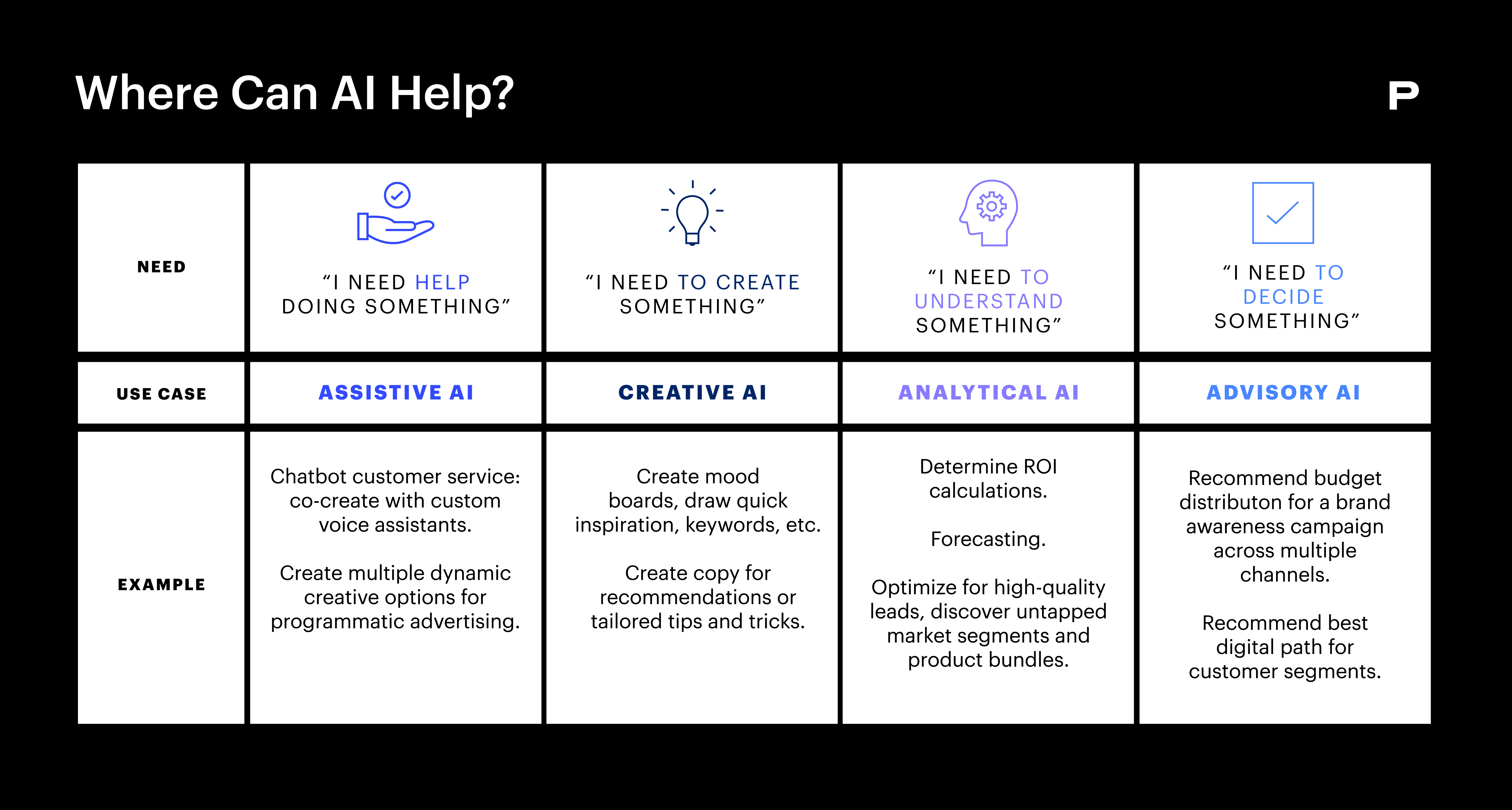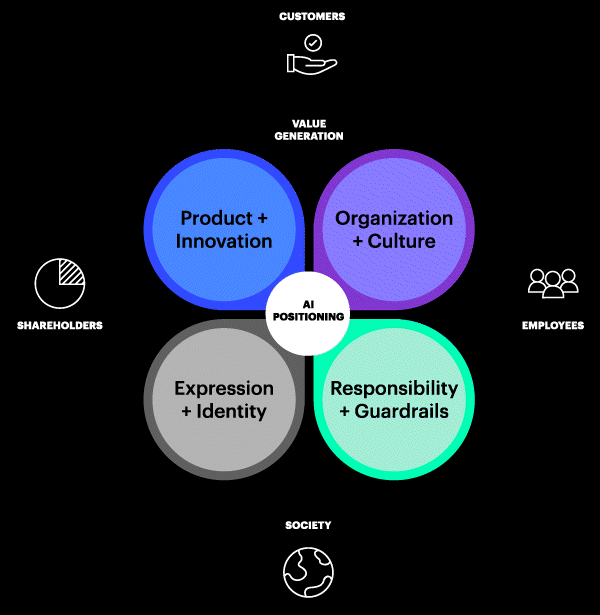BLOG
Brand Ambition: The Secret to Sustainable Growth
As many companies struggle to find meaningful sales gains, we’ve isolated an essential element of value creation.
The most successful businesses are often the most ambitious. A corollary is that when brands find it increasingly difficult to deliver meaningful growth, the cause is often a case of stunted ambition.
Marketing leaders understand their company’s vision, purpose and mission. And they’ve invested in crafting inspired brand positionings. But ask them about brand ambition – how the brand delivers on the Purpose and the role the brand plays in value creation – and they might not have a clear response. Ambition represents a powerful and critical part of bridging corporate and brand strategy. It can turn a brand into a fast-moving growth engine, powering commercial success throughout the organization.
Having a clearly defined ambition matters. Prophet’s ongoing research on brand relevance has shown that ambition is the spark that ignites brands and helps to define “who we are” as a brand, serving as a roadmap for setting and achieving future goals. Ambition is more than just reaching sales objectives. It enables brands to find new ways of connecting and evolving, which allows them to outpace the competition by gaining market share, earning customer loyalty and unlocking new sources of business growth. Ambition should:
- Articulate the overall business impact a brand is trying to create.
- Translate the organizational purpose, making sure it is tangible, pursuable, and connected to the company’s strategic focus.
- Emphasize the role of the brand in value creation.
Once an ambition has been defined, brands can deploy it to galvanize internal stakeholders across the organization around a strategic and inspiring future vision. It becomes a core commercial tenet informing investments, in-market activations and experiences, creating a sense of cohesion and progress toward that future state.
Ambition should not be confused with purpose. Purpose is the value a company brings to the world, above and beyond products and services. Ambition represents how the brand will deliver on that Purpose and the value it will create for the business in doing so. The best ambitions involve a figurative handshake between the CMO and CEO, enabling the brand to create tangible value by paving the way for growth opportunities, reaching new customers, segments and products. By having a clearly defined ambition, you can effectively translate your business strategy into a brand goal.
Ambitious brands find ways to stand out as category leaders. Airbnb, for example, is all-in on delivering memorable experiences. Sure, it gives customers convenient lodging at great prices, like many competitors, and provides a platform for homeowners similar to VRBO. But only Airbnb is likely to send guests on a hike with a pack of well-trained German Shepherds, connect them with certified tea masters in Japan, or book them into historic castles in Scotland. It has defined its future state as an integrated travel and experiences company and actively builds towards it, deepening revenue streams and unlocking new ones. And consumers have taken notice – Prophet’s brand relevance research identifies Airbnb as the most relevant hospitality brand, performing especially well on the emotional, “Heart” facets of brand relevance. The brand leads consumer perceptions on key attributes, such as “Engages with me in new and creative ways”, and “is always finding new ways to meet my needs.” As the travel industry continues its rebound, it is no surprise that Airbnb’s share price is up over 50% YTD (at the time of this writing).
Zelle is another ambitious brand. Instead of wanting to be like other disruptive fintech players, its goal is the reverse: It wants to play well with others. Zelle maintains its best-in-breed status by working within the ecosystem of legacy retail banks, constantly seeking new ways to help people manage money digitally without cutting ties to their bank. The brand is front-facing and actively supported by large-scale banking partners, playing a leading role in creating consumer routines in financial transactions. And it is a great example of how a brand can play a primary role in value creation. In our research, Zelle emerged as one of the most relevant financial services brands, with strong performance on more rational, “Head” factors. The brand leads on key dimensions related to trust, consistency, and dependability. And even with an ambition that is less disruption and more connection, Zelle is seen as a “modern, and in touch” brand.
Is it Time to Elevate Your Brand Ambition?
A hallmark of ambitious companies is that they generally make their ambitions known. Look no further than their 10-Ks, earnings calls, and letters from the CEO. They describe their growth plans and what they intend the company to look like in the next five to 10 years.
But many companies – and we’d argue most –could benefit from reevaluating their brand ambition to ensure it addresses current market conditions and the right future outlook. Increased competitive intensity, disruption from new entrants and systemic regulatory or technology changes all create the need for a more elevated ambition. So can changes in consumer behavior and cultural shifts among critical stakeholders.
Any one of these factors can lead to several negative outcomes. A slowdown in growth is the most obvious, but any indication of declining relevance or customer engagement – even if those haven’t yet affected revenue – is cause for concern. Organizational distress, declining employee satisfaction and a less-engaged workforce are also warning signs. Other indicators include unstructured brand and marketing efforts, varied campaigns with no clear strategy or messaging.
Companies can assess their ambition by asking themselves three questions:
- Is the brand acting in service of and playing a leading role in delivering on corporate strategy?
- Does the business know our customers well enough to know how the brand is improving people’s lives today and into the future?
- How well do those brand benefits align with the company’s current assessment of strategic growth areas?
How to Define or Refine Brand Ambition
If any of those answers seem unclear, it’s time to clarify and evolve the brand’s ambition. To get started, take a fresh look at the current customers and consider the sources of value and future growth while integrating a detailed understanding of the growth landscape into the new ambition. Consider these critical elements by asking:
Is there a clear customer target, an inspirational purpose or a compelling positioning? And how does it establish the target future state for the brand?
KitchenAid continues to build relevance with modern cooks. It understands that the ways people prepare food may change, leading the way with spiralizers, air fryers and appliance innovations. But it also knows kitchen creativity is timeless, making that iconic stand mixer a “real cooks live here” status symbol for decades. KitchenAid is perennially ranked as one of the most relevant brands, and setting the right ambition has meant that the brand leads the category on measures of dependability, trust, and consistency, while also making consumers feel inspired.
What are our core beliefs that guide and inspire actions?
Companies should understand the needs they fulfill today to envision doing it better tomorrow. Hoka’s mission is lofty, making athletes feel like they can fly. But it also has an ever-expanding definition of who it serves, like nurses, who average 16,000 steps per shift. It also reconsiders when it helps people, with casual trainers designed for recovery among its fastest-growing styles. Sales are up nearly 60% YoY, and parent company Decker is confident it will soon be a $2 billion brand – assuming it stays true to its ambition.
What business are we in, and how might the brand allow the company to execute its corporate strategy?
Barbie may be getting most of Mattel’s buzz, but the company has also expanded its ambitions in other products, including Hot Wheels. While it still sells plenty of diecast cars and connecting tracks, its new purpose is to ignite the challenger spirit within kids, encouraging them to try, fail, and try again. That commitment to fostering grit and resilience works not just with its classic toys and tracks but also with the fast-growing universe of Hot Wheel’s games and digital content. And despite being in a category that is in constant upheaval, and subject to rapidly changing consumer preferences, company shares are up over 18% at the time of this writing.
This question calls for a fresh take on customers, looking for sources of value and future growth in adjacent categories. Direct-to-consumer brands continue to school legacy companies in their ability to quickly move into new categories and channels. Liquid Death, the cult water brand, now sells Rest in Peach and the Grim Leafer iced teas. E.L.F. Cosmetics is using dupe thinking to make sticky primers a must-have. Chewy has moved into veterinary services and pet insurance, all on the back of an exceptional commitment to service for pet owners.
Is our ambition flying at the right altitude?
It risks organizational uncertainty if it’s too lofty, intangible, or unrealistic. If it is too close in – for instance, reducing brand performance to battles for share points – it leaves no runway for growth, expansion or progress. Ambition defines a clear and pursuable path for future advancement.
Calm, the meditation app that consistently scores as one of the most inspirational and emotionally engaged brands in our relevance research, learned how to soothe and provide supportive mediative guides to tens of millions over the last several years. That gave the company the conviction for its next ambitious move, with clinical mental health.
FINAL THOUGHTS
Marketing leaders often overlook their brand’s ambition, a vital link between corporate and brand strategy. Ambition inspires stakeholders and fosters cohesion. Regularly revisiting it ensures alignment with market changes and ensures continued delivery of real customer value. Key elements include a clear customer target, alignment with corporate strategy, and a clearly defined role that the brand plays in creating value, providing a pursuable and measurable path for uncommon growth.
Ready to build an ambition that powers your growth engine? Contact us today.























